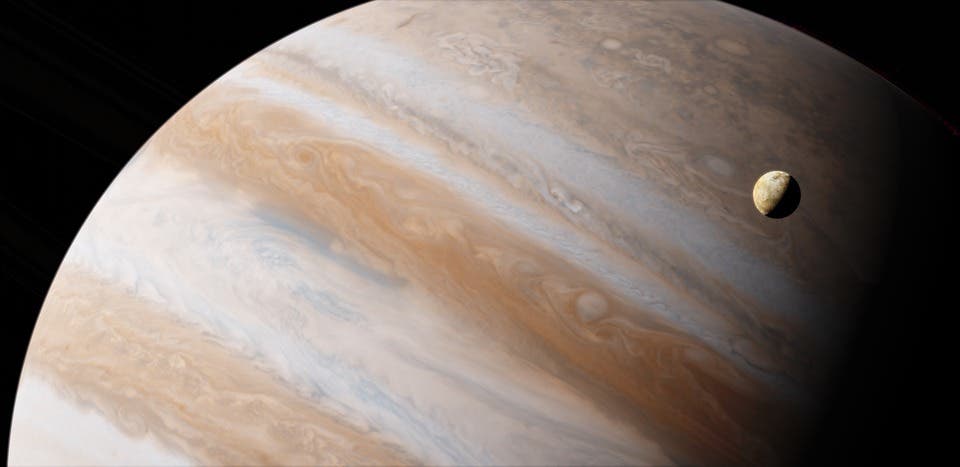Jupiter traveled a bit in its youth, evidence from asteroids around the planet reveals. This brown gas giant formed four times as far away from the sun than the orbit it’s currently on and inched closer over the last 700,000 years.

Image via Pixabay.
New research led by members from the Lund University is revealing Jupiter’s wandering past based on the company it keeps. Using computer simulations to look at the distribution of near-Jupiter asteroids called Trojans, the team reports that their current layout in space can only be explained by Jupiter forming far away and then migrating to a closer orbit around the sun.
The prodigal son
“This is the first time we have proof that Jupiter was formed a long way from the sun and then migrated to its current orbit,” explains Simona Pirani, doctoral student in astronomy at Lund University, and the lead author of the study. “We found evidence of the migration in the Trojan asteroids orbiting close to Jupiter.”
Gas giants, as a rule of thumb, orbit pretty close to their host stars. To the best of our knowledge. that’s not where they form, however — these ponderous bodies of gas accrete further away and then migrate closer to the star.
In order to find out if Jupiter behaved the same way, Pirani’s team used computer simulations to estimate its movements over the past 4.5 billion years. The solar system was quite young in that day, its planets freshly-minted from the primordial dust which circled around the sun in a disk. At that time, 4.5 billion years ago, Jupiter was no larger than our own planet, the team reports.
It was also four times further away from the sun that it is now.
The Trojans Pirani talks about consist of two groups of thousands of asteroids that float around roughly on the same orbit as Jupiter — one group a bit in front and the other a bit behind the planet’s exact orbit. There are also 50% more Trojans in front of Jupiter rather than behind it, the team explains, a feature which helped them understand how the planet migrated over time.
“The asymmetry has always been a mystery in the solar system,” says Anders Johansen, professor of astronomy at Lund University and one of the paper’s co-authors.
We never really understood why there were more Trojans in front of Jupiter rather than behind it up to now. The team’s simulations suggest this happened because Jupiter gradually corralled in asteroids as it moved towards the sun. Based on the ratio between the two bodies of Trojans, the team says Jupiter likely formed four times farther out in the solar system than it is today. During its journey towards the sun, the planet’s gravity then drew in more Trojans in front of it than behind it.
According to their study, Jupiter’s migration took around 700,000 years, roughly 2-3 million years after it first started accreating. It moved closer to the center of the solar system on a spiral trajectory, as Jupiter orbited the sun in on increasingly tight orbit, goaded on by shifting gravitational forces from the gases surrounding the Sun, the team says.
The Trojans joined Jupiter while it was still a young planet — just a solid core without any atmosphere. This suggests that the Trojans are probably hewn of the same (or similar) matter that formed Jupiter’s core. NASA’s upcoming Lucy mission (scheduled for 2021) will allow the team a closer look at the Trojans.
“We can learn a lot about Jupiter’s core and formation from studying the Trojans,” says Anders Johansen.
The authors believe that the gas giant Saturn and ice giants Uranus and Neptune could have migrated in a similar way to Jupiter during their history.
The paper “Consequences of planetary migration on the minor bodies of the early solar system” has been published in the journal Astronomy & Astrophysics.






